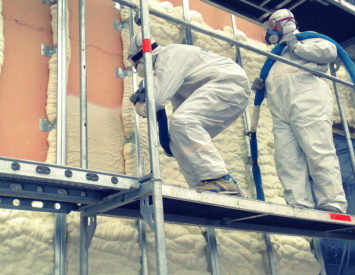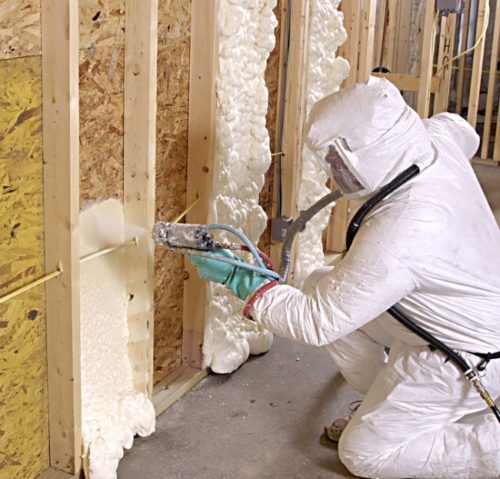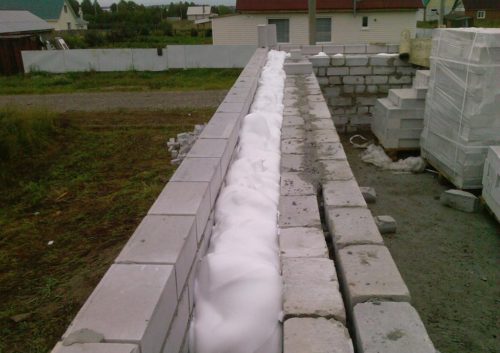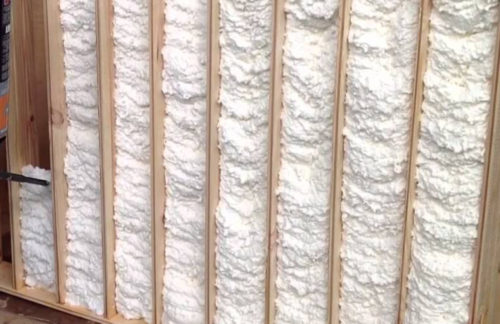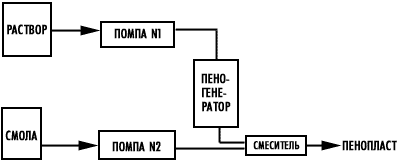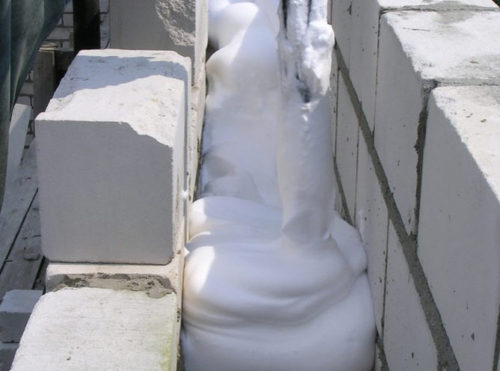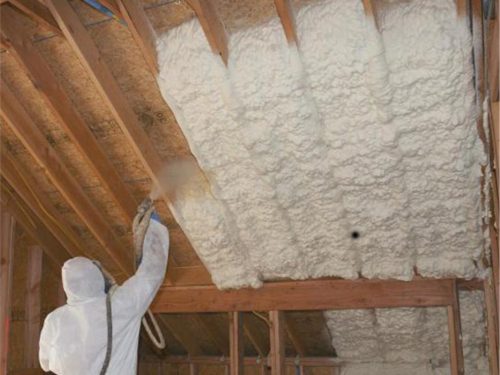Foam - light and cheap material, which for many years is used as an effective insulation. And the easiest in the installation is penyazole - a liquid type material. In this article, we will talk about the properties and spheres of the use of liquid foam, about the features of its production and applying with their own hands.
Content
Features, positive and negative properties of liquid foam
If you decide to choose a liquid foam for the insulation of the house, first should be familiar with its characteristics. Among the advantages of this building material, the following features can be distinguished:
- Easy is one of the main advantages. Due to the small weight, the foam can be insulated even the smallest and unstable structures. For example, houses with a weak foundation or construction erected on unstable soils.
- Low price. Polyfoam is considered one of the cheapest insulation, which is still very popular in the construction sector to this day. The cost of it, at least twice the price of the installation foam.
- Reviews about liquid foam indicate that such material has excellent heat and noise insulating characteristics. According to the specified properties, the liquid material is not currently inferior to its slab analogue or polyurethane foam.
- The liquid foam does not affect the linear extension. It perfectly transfers temperature differences. In addition, it does not spoil from ultraviolet, which cannot be said about the assembly foam.
- In a liquid form, such a type of foam is considered toxic, but after frozen it becomes completely harmless.
- This type of insulation is completely unattractive for neither rodents or insects. That is why it is very often used in the construction of private houses.
- The foam produced in the form of a liquid substance, easily penetrates any places, fills the cavities and cracks.
- The material is considered easy to use, does not require complex skills.
In addition to the prospect of liquid foam plastic, there are cons:
- Such a heater as a liquid foam, absolutely does not miss moisture. On the one hand, it is good, since the material in addition to insulation performs and waterproofing function. But on the other hand, the foam in a completely steamproof, that is, it prevents the normal moisture method between the walls of the building and the street. In such a case, the walls can be hone under a layer of insulation.
- As long as the material does not freeze, it allocates toxic substances into the environment, namely, formaldehyde. Fortunately, it evaporates quickly, but, nevertheless, it is necessary to work with the insulation carefully, in a protective suit, glasses, a respirator.
- Another lack of liquid foam - an unpleasant smell. Over time, when formaldehyde completely disappears, the smell disappears with it.
Scope of application of liquid foam
Liquid foam can be insulated and waterproof almost any surfaces. Most often, the material is used on horizontal planes, namely - in the attic floors in the panel houses. Often in such a material isolate the interconforms and inclined surfaces.
Since it is easier to work with a liquid than with a sheet and rolled material, such a type of foam is simply created for the insulation of all kinds of sinuses and cavities. The foam supplied through the installation has a rather dense consistency, so that it can fill the space between two resistant planes. So, the liquid foam is used for the thermal insulation of the stone formwork, false walls, wooden floors.
With the help of liquid foam, you can warm the various containers. For this, around the tank, it is necessary to establish a barrier and the resulting space to fill with liquid foam.
Types of liquid foamflast
You can watch the video of applying liquid foam with your own hands at the end of this article, and first I would like to figure out what kinds of material exist. It is customary to classify it in which it is produced in what packaging and packaging, because by itself such a foam is the same substance. So, this kind of liquid foam plastic can be found on sale today:
- Industrial foam. It is necessary to have a special installation for its preparation. It is worth it quite expensive, so for household purposes there is practically no one buys. But for insulating works on an industrial scale without such an aggregate can not do. It prepares the liquid foam directly during operation and under high pressure supplies it to the plane processed.
- Liquid foam in cylinders is another form of material release. These cylinders are reusable and, if necessary, recharge. In one cylinder, a special mixture of pasty consistency is refilled, in the second - catalyst. In the process of operation, both substances are connected and fed to the surface in the form of a finished liquid foam.
- There is also the so-called household liquid foam. It can be used both as glue, because it is sold in small canopy with a tube.
When choosing the desired form of release, you should rely on future scope of work.
Production of liquid foamflast
The liquid foam, as a rule, is prepared at the place of work from several components. Finished foam is fed to the surface through a special installation, and subsequently harvested. So-called mobile stations are used to prepare liquid foam.
Raw materials for the production of liquid foam used in the warming of walls, serve and hardener. The components are stirred and transformed into a foam using a special unit. Subsequently, the foam is submitted to the working base through a pressure hose 5 atmospheres.
The device for the preparation of liquid foam can be purchased at the finished form, but it will cost it is not suiced, up to 2.5 thousand dollars. You can assemble the unit yourself from suitable parts. The principle of installation is fairly simple. With the help of hydraulic pump, the raw material and catalyst - carbamy-formaldehyde resin - come to the unit. There, under the influence of compressed air, they turn into a foam and under pressure through the hose are enrolled on the processed zone. Details for assembling such a design are freely available, and the drawings can be found on specialized resources.
Applying liquid foams with their own hands
- To begin with, the workforce must be prepared. If this is not done, the material can be bad to clutch with the surface, it will start peeling. And to ensure good adhesion, on the surface being processed, first of all, there should be no dust and dirt. So the first thing the base should be cleaned. In addition to dirt, no fats and oils should be present on the working basis, which means it should also be degreed. Also, the processed surface should be wet - so the sealant is better to it.
- After preparing the base, the insulation itself can be prepared. For this, the cylinder must be heated to such a temperature, which is indicated by the manufacturer of the material. After heating, the balloon also need to shake high quality, to mix all components inside the container. Please note that the liquid foam should be heated in water, but in no case over fire.
- Now the insulation can be applied to the surface. If we are talking about everyday foam, then there is nothing complicated. Foam is applied to the surface through the tube and the dispenser either through the gun. Pressing the valve, apply the material to the base and control the insulation layer at its discretion.
- When the foam sprouts, its excess must be cut off with a knife or any convenient sharp tool. But this is only necessary if you take care of the aesthetic surface. If the processed area is hidden and nevertheless, then you can do without this stage.
